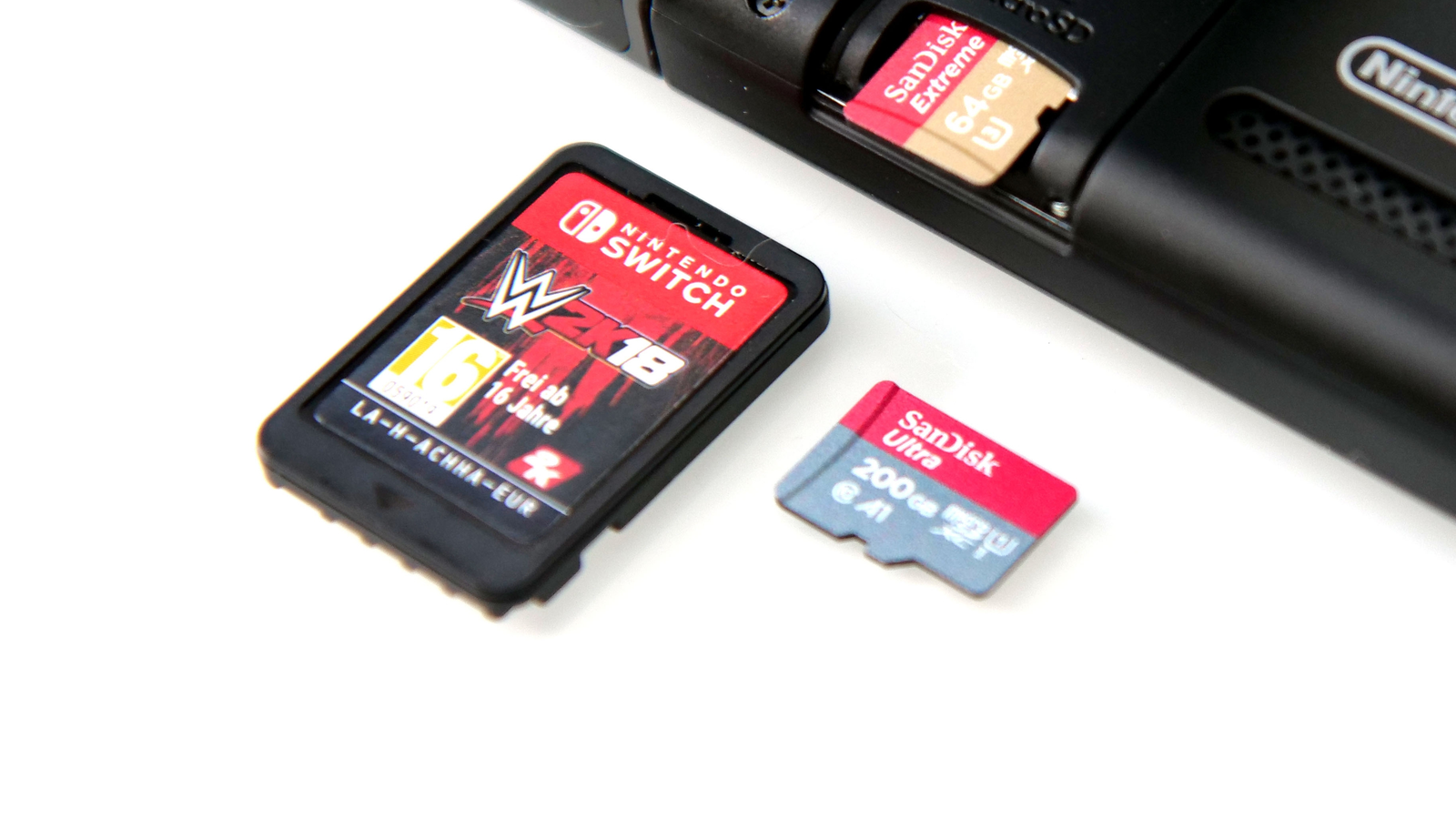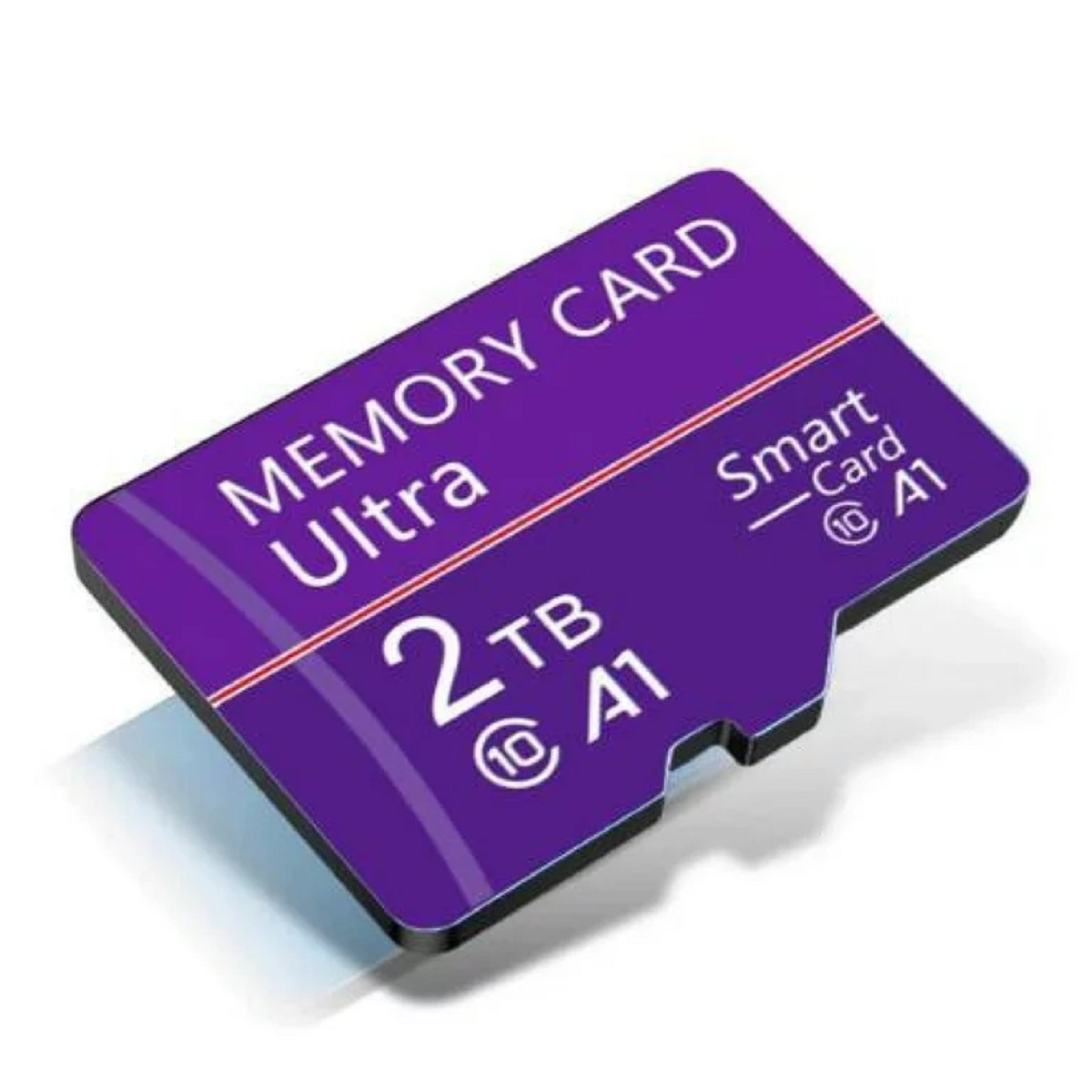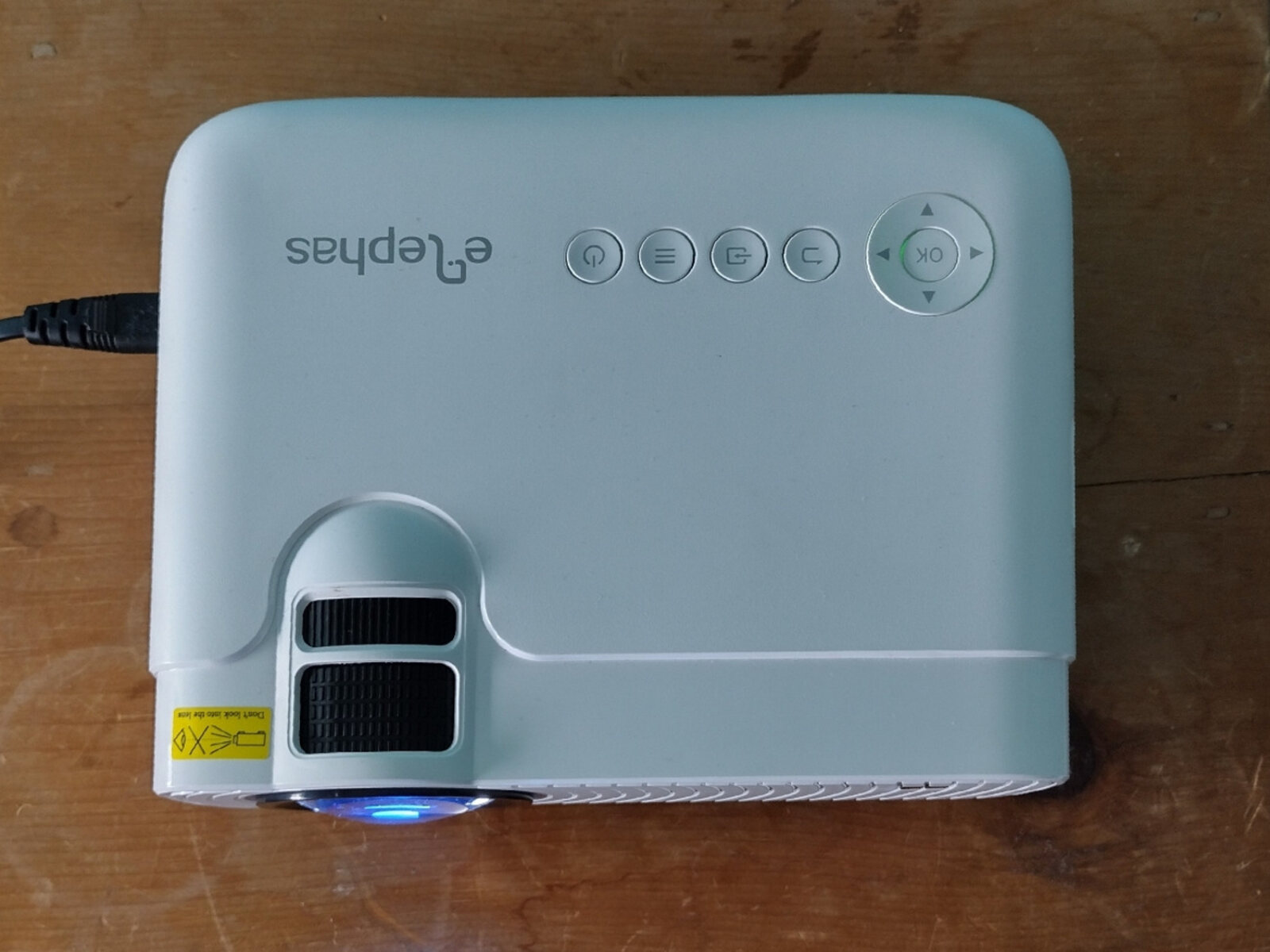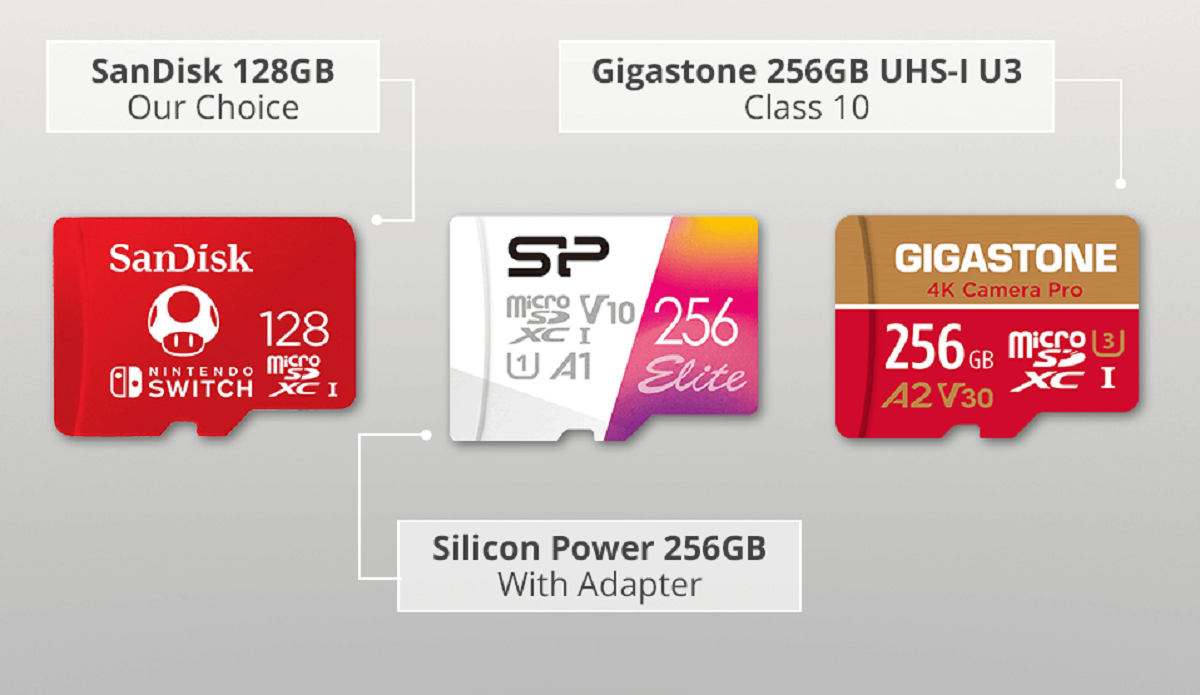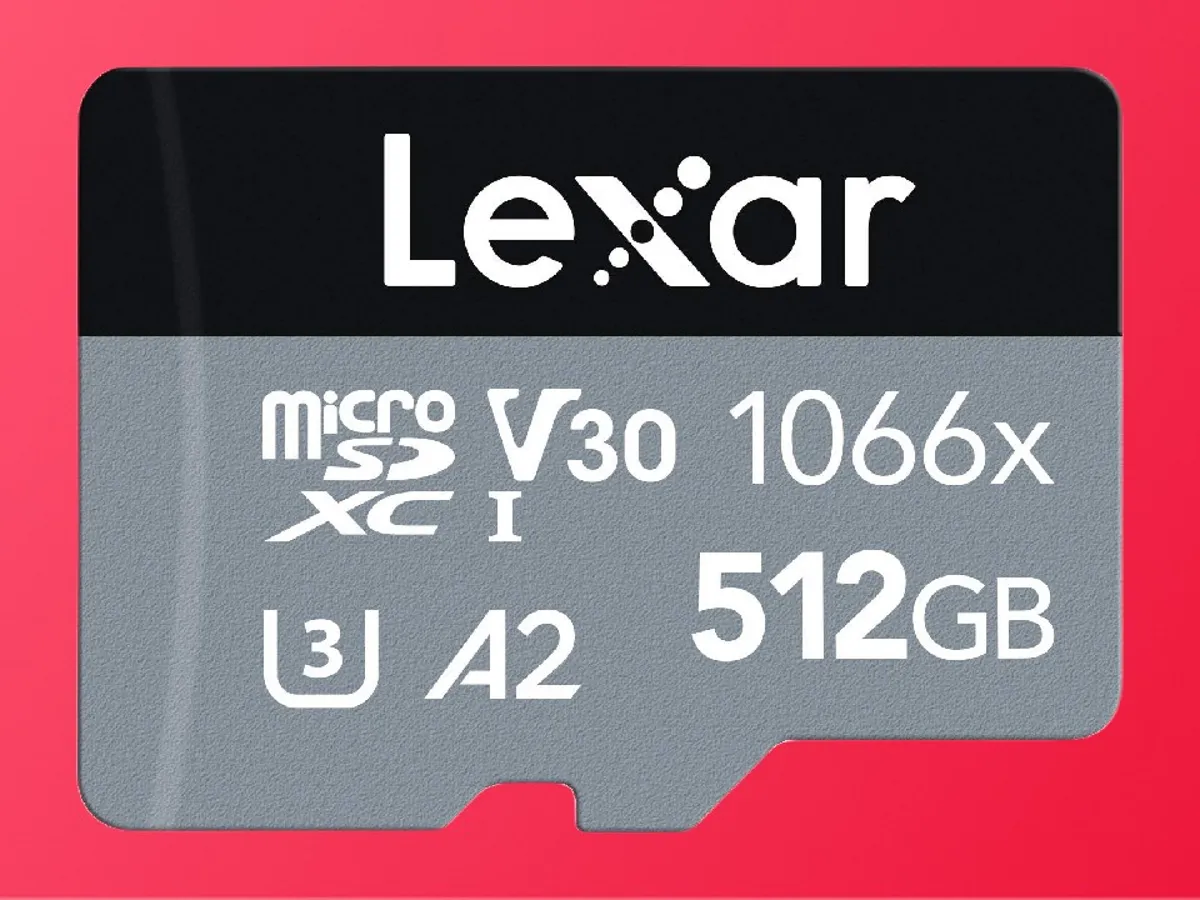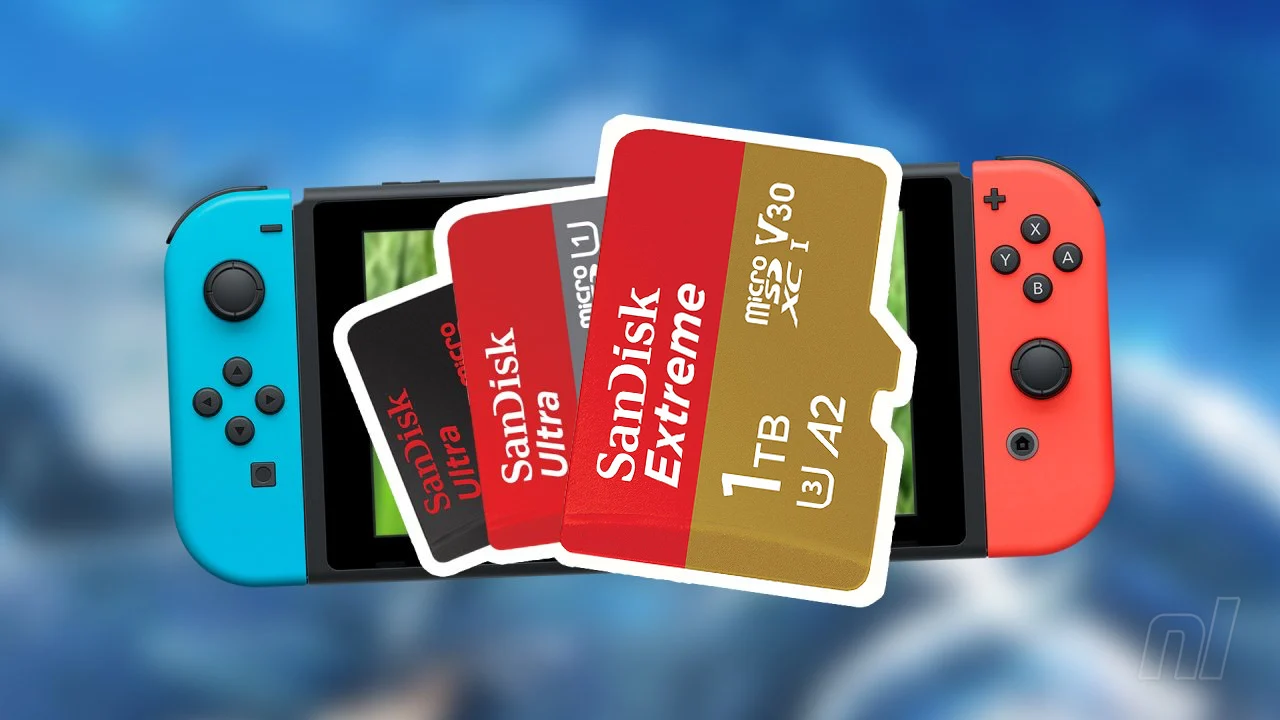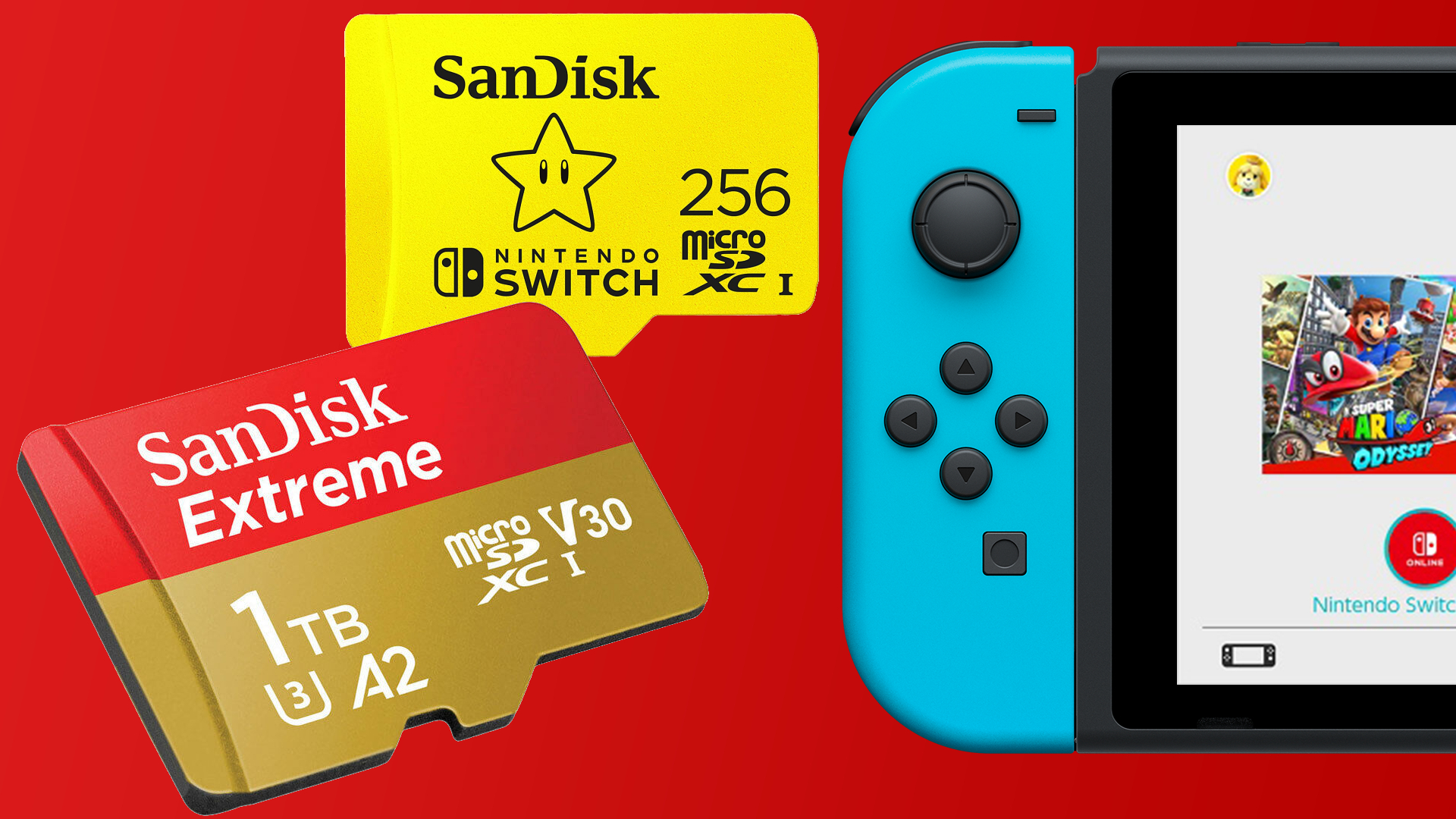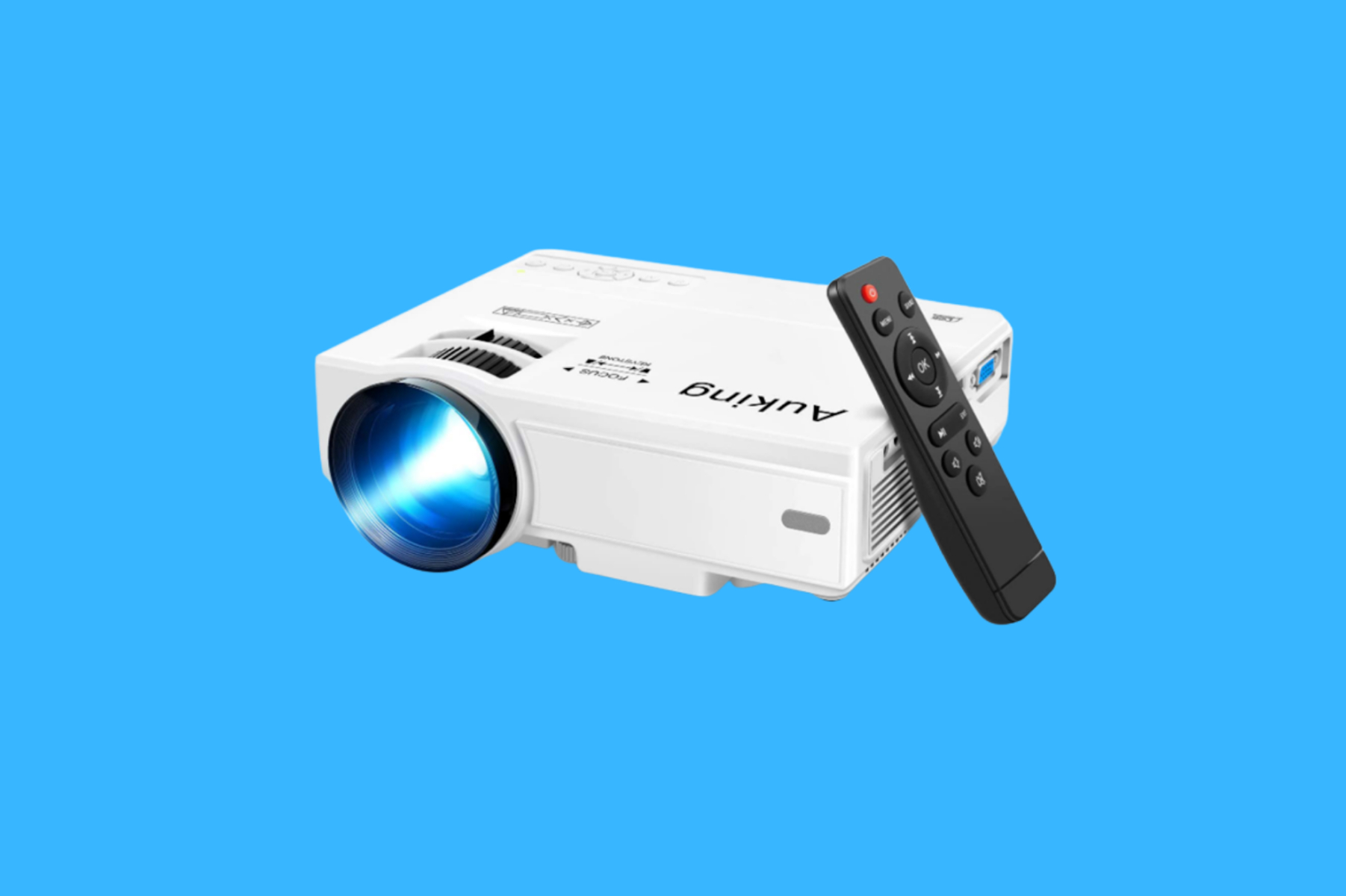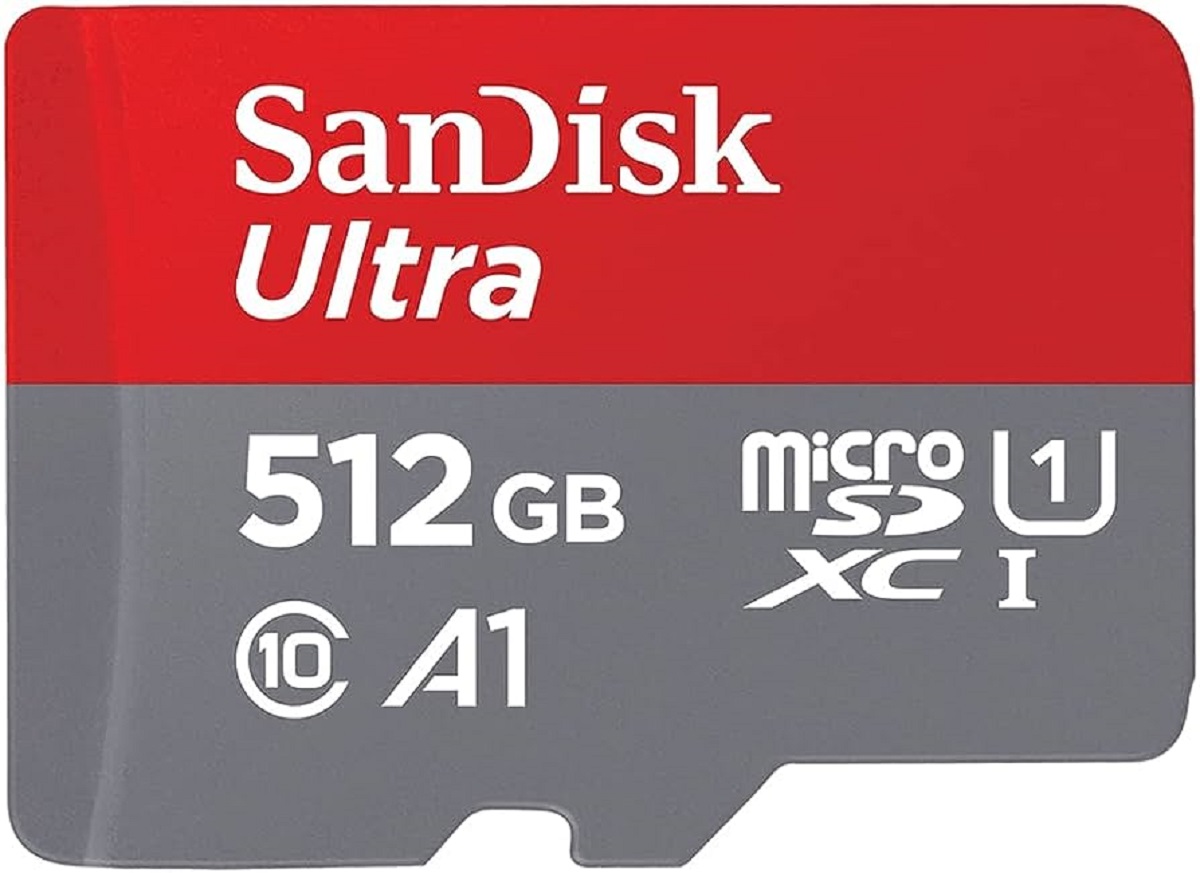Introduction
Welcome to the world of gaming! If you’re a proud owner of the Nintendo Switch, then you already know the joy of playing your favorite games anytime and anywhere. The Nintendo Switch is a versatile gaming console that allows you to enjoy both handheld gaming and traditional console gaming on your TV. One of the key features that sets the Switch apart is its expandable storage capability using SD cards. This means that you can easily increase the storage capacity of your Switch and download more games, updates, and DLCs without worrying about running out of space.
In this article, we will explore the topic of SD cards for the Nintendo Switch, specifically focusing on the question of how big of an SD card you should get. We will discuss the different factors to consider before choosing an SD card, the various sizes and storage capacities available, and provide recommendations for the ideal SD card sizes based on different usage scenarios. Whether you’re a casual gamer looking to store a few games or a dedicated gamer with a vast library, we have got you covered.
Before we dive into the details, it’s important to note that the Nintendo Switch has its own internal storage, which is limited, typically ranging from 32GB to 64GB depending on the model. While this internal storage can hold a few games, it quickly fills up, especially with the large file sizes of modern games. That’s where an SD card becomes essential for expanding your storage and maximizing your gaming experience.
So, if you’re ready to take your Nintendo Switch gaming to the next level and ensure you have enough space for all your favorite games, let’s embark on the journey of finding the perfect SD card for your Switch.
Understanding the Nintendo Switch
Before delving into the details of SD cards, it’s important to have a good understanding of the Nintendo Switch itself. Launched in 2017, the Switch revolutionized the gaming industry with its innovative design and unique features. It combines the handheld and traditional console gaming experiences into one device, giving gamers the flexibility to play in different modes depending on their preferences.
The Switch features a tablet-like console that can be docked to a TV for playing games on a large screen. Alternatively, it can be played in handheld mode by attaching the Joy-Con controllers to the sides of the tablet. This versatility makes the Switch perfect for gaming on the go or enjoying a more immersive gaming experience at home.
With its powerful hardware, the Nintendo Switch delivers stunning graphics and smooth gameplay. From action-packed adventures to puzzle-solving challenges, the Switch offers a wide array of games that cater to all types of gamers. Whether you’re a fan of Nintendo’s iconic franchises like Super Mario and Zelda or enjoy third-party titles, the Switch has something for everyone.
In addition to its gaming capabilities, the Switch also supports online gaming and features an eShop where you can purchase and download games directly to your console. This digital library allows you to build a collection of games without the need for physical cartridges.
To make the most of your Switch gaming experience, it’s crucial to have sufficient storage space. This is where SD cards come into play. By expanding your storage with an SD card, you can store more games, screenshots, videos, and downloadable content.
Now that we have a solid understanding of the Nintendo Switch, let’s dive deeper into the world of SD cards and explore how they can enhance your gaming experience.
What is an SD Card?
An SD (Secure Digital) card is a portable storage device that provides additional storage space for various electronic devices, including the Nintendo Switch. It is a small, rectangular card that can be inserted into the designated slot on the console to expand its storage capacity.
SD cards are commonly used in digital cameras, smartphones, tablets, and other devices that require additional storage for photos, videos, music, and documents. They are available in various sizes and storage capacities to suit different needs.
The primary advantage of using an SD card with the Nintendo Switch is the ability to store digital game files. With the ever-increasing size of modern games, the internal storage of the Switch can quickly become insufficient. By utilizing an SD card, you can download and store more games, ensuring that you never run out of entertainment options.
In addition to storing games, SD cards can also be used to store screenshots, videos, game saves, and downloadable content (DLCs). This allows you to capture and share your gaming achievements, record gameplay footage, and access additional content for your favorite games.
It’s worth noting that not all SD cards are created equal. Speed and performance can vary between different cards, which can affect the loading times of games and the overall performance of the Switch. Therefore, it’s important to choose an SD card that meets the recommended specifications for the console to ensure a smooth gaming experience.
Now that we have an understanding of what an SD card is and its purpose, let’s explore how to determine the optimal size of the SD card for your Nintendo Switch.
How Big of an SD Card Does the Nintendo Switch Support?
The Nintendo Switch is compatible with MicroSD, MicroSDHC, and MicroSDXC cards. These cards offer varying storage capacities, allowing you to choose the size that best suits your gaming needs. The maximum supported capacity by the Nintendo Switch is 2 terabytes (TB), although such high-capacity SD cards are not yet commercially available.
While the maximum supported capacity is impressive, it’s essential to consider practicality and cost-effectiveness when choosing an SD card for your Switch. As of now, the most commonly available SD card sizes for consumers range from 32 gigabytes (GB) to 1 TB.
The recommended minimum size for an SD card on the Nintendo Switch is 32 GB. This provides ample storage space for a few games, save data, and some downloadable content. However, if you plan on building a more extensive game library, it’s advisable to opt for a higher capacity SD card.
For most gamers, a 64 GB or 128 GB SD card is often more than sufficient. With these sizes, you can comfortably store numerous games, DLCs, and other content without worrying about running out of space. Additionally, a 64 GB or 128 GB SD card offers a good balance between storage capacity and affordability.
If you’re a hardcore gamer who wants to have a vast collection of games at your fingertips, you might want to consider 256 GB or even 512 GB SD cards. These larger capacity cards are ideal for those who prefer the convenience of having many games available without having to frequently delete and re-download them.
It’s important to note that the size of the SD card does not directly affect game performance. Games will run just as smoothly, regardless of whether they are stored on the internal storage or an SD card. The primary difference lies in the storage capacity.
Now that we have a clear understanding of the SD card sizes supported by the Nintendo Switch, let’s explore the factors you should consider before selecting the right SD card for your gaming needs.
Factors to Consider before Choosing an SD Card
When selecting an SD card for your Nintendo Switch, there are several important factors to consider to ensure that you make the right choice. Taking these factors into account will help you find an SD card that not only offers sufficient storage capacity but also meets the performance requirements of the console. Here are some key factors to consider:
- Storage Capacity: Determine how much storage space you need based on your gaming habits. Consider the number of games you plan to download and whether you’ll be storing other media like screenshots, videos, and DLCs.
- Speed Class: The speed class of an SD card indicates how quickly it can read and write data. For optimal performance on the Switch, look for SD cards with a minimum speed class of UHS-I U1 or U3. These cards offer faster load times and smoother gameplay.
- Brand and Reliability: Stick to well-known brands when choosing an SD card to ensure reliability and quality. Brands like SanDisk, Samsung, and Lexar are known for producing high-performance and durable SD cards.
- Price: Compare prices of SD cards from different brands and retailers to find the best value for your budget. Consider the cost per gigabyte or terabyte to ensure you’re getting the most storage for your money.
- Compatibility: Ensure that the SD card you choose is compatible with the Nintendo Switch. While most SD cards in the market should work, it’s always a good idea to double-check the compatibility with official Nintendo guidelines or user reviews.
- Warranty: Check if the SD card comes with a warranty. This can provide peace of mind in case of any manufacturing defects or failures.
By carefully considering these factors, you can select an SD card that is not only compatible with your Nintendo Switch but also offers the right balance of storage capacity, speed, reliability, and affordability.
Now that we’ve identified the factors to consider, let’s explore the different sizes and storage capacities available for SD cards and recommend the ideal sizes for different usage scenarios.
Different SD Card Sizes and Storage Capacities
SD cards come in various sizes and storage capacities to accommodate different needs and usage scenarios. Here are the most common sizes and their corresponding storage capacities:
- 32 GB: A 32 GB SD card is a popular choice for casual gamers or those with a limited budget. It provides enough storage space for a few games, save data, and some additional content.
- 64 GB: With a 64 GB SD card, you can comfortably store a moderate number of games, DLCs, and media files without worrying about running out of space.
- 128 GB: Ideal for gamers who enjoy a diverse collection of games, a 128 GB SD card offers ample storage space for numerous games, DLCs, and other content.
- 256 GB: For avid gamers who prefer to have a vast library of games readily available, a 256 GB SD card is an excellent choice. It provides significant storage capacity for a wide range of games and media files.
- 512 GB: A 512 GB SD card is perfect for hardcore gamers or those who want to store an extensive collection of games without worrying about storage limitations.
- 1 TB: If you’re a true gaming enthusiast who wants to have the ultimate library of games, a 1 TB SD card offers an outstanding amount of storage space.
It’s important to note that the actual usable storage space will be slightly less due to formatting and system files. Additionally, as game file sizes continue to grow, it’s worth considering larger capacity SD cards to future-proof your storage needs.
When deciding on the right SD card size, consider how many games you plan to store, whether you want to capture screenshots and videos, and how often you’ll be using downloadable content. Opting for a larger capacity SD card can save you the hassle of constantly managing your storage by deleting and re-downloading games.
Now that we have explored the different SD card sizes and storage capacities, let’s move on to the recommended SD card sizes based on different usage scenarios.
Recommended SD Card Sizes for Different Usage
The ideal SD card size for your Nintendo Switch depends on your gaming habits and storage needs. Here are some recommended SD card sizes based on different usage scenarios:
- Casual Gamer: If you’re a casual gamer who plays a few games occasionally, a 32 GB SD card should suffice. It provides enough storage space for a modest game collection, save data, and some downloadable content.
- Medium-Sized Library: For gamers with a moderate-sized library, a 64 GB or 128 GB SD card is recommended. With this size, you can comfortably store a good number of games, DLCs, and media files without worrying about running out of space.
- Extensive Game Collection: If you’re an avid gamer with an extensive collection of games, a 256 GB or 512 GB SD card is highly recommended. These sizes offer ample storage capacity for a wide range of games, DLCs, and media files.
- Enthusiast or Collector: For the true gaming enthusiasts or collectors who want to have a massive library of games readily available, the ideal choice would be a 512 GB or 1 TB SD card. These sizes provide an exceptional amount of storage space to accommodate even the largest game collections.
It’s worth considering your future gaming needs as well. Game file sizes are continuously growing with updates and patches. By choosing a larger capacity SD card, you can ensure that you won’t run out of storage space as you download more games or DLCs in the future.
Remember, the recommended SD card sizes mentioned above are guidelines, and you should choose the size that aligns with your personal gaming preferences and budget.
Now that you have an idea of the recommended SD card sizes based on different usage scenarios, let’s move on to how to insert and format an SD card on the Nintendo Switch.
How to Insert and Format an SD Card on the Nintendo Switch
Adding an SD card to your Nintendo Switch is a straightforward process. Follow these steps to insert and format an SD card:
- Power Off: Make sure your Nintendo Switch is turned off before proceeding.
- Locate the SD Card Slot: Open the back cover of the Nintendo Switch and locate the SD card slot. It is located on the bottom right side of the console.
- Insert the SD Card: Insert the SD card into the slot, making sure the contact points on the card are facing downwards. Gently push the card in until it clicks into place.
- Power On: Power on your Nintendo Switch.
- Format the SD Card: After inserting the SD card, the console will detect it. On the Home menu, navigate to “System Settings” and scroll down to “Data Management.” Select “Format microSD Card” and follow the prompts to format the card. Be aware that formatting will erase all data on the SD card, so make sure to back up any important files beforehand.
- Confirmation: Once the formatting is complete, you’re ready to use the SD card on your Nintendo Switch. Any games or downloadable content you download or move to the SD card will now be stored on it instead of the console’s internal storage.
Formatting the SD card ensures it is compatible with the Nintendo Switch and optimizes its performance. It also sets up the proper file structure for game installations and updates.
Remember that the console will recognize the SD card as the designated storage location for new downloads or installations. However, some game data, such as updates, may still be stored on the internal memory. To manage your SD card storage effectively, periodically check your game data and move any unnecessary files from the internal storage to the SD card.
Now that you know how to insert and format an SD card on your Nintendo Switch, let’s move on to some tips for managing and optimizing SD card storage.
Tips for Managing and Optimizing SD Card Storage on the Switch
Managing your SD card storage effectively is essential to ensure you have enough space for all your games and content on the Nintendo Switch. Here are some tips to help you optimize and make the most out of your SD card storage:
- Regularly Organize and Delete Games: Periodically review your game library and delete any games you no longer play or need. This will free up space and prevent your SD card from getting cluttered.
- Move Games to SD Card: If you have games installed on the internal storage, you can move them to the SD card to free up space. Go to “System Settings,” then “Data Management,” and select “Move Data Between System / microSD Card” to transfer games to the SD card.
- Keep Track of Downloads: Be mindful of the games and content you download. Avoid making unnecessary downloads to prevent your SD card from filling up quickly.
- Save Screenshots and Videos on the SD Card: By default, screenshots and videos are stored on the internal storage. To free up space, go to “System Settings,” then “Data Management,” and select “Manage Screenshots and Videos” to move them to the SD card.
- Install Games Wisely: When downloading games, consider the file sizes and your available storage space. Opt for physical game cartridges when possible to conserve space on the SD card.
- Regularly Check for Game Updates: Updates for games may take up additional storage. Keep track of game updates and remove outdated patches to save space.
- Back Up Important Saves: If you’re planning to delete or uninstall a game, make sure to back up the saved data to prevent loss. You can do this through the “Data Management” section of the “System Settings.”
- Avoid Overfilling the SD Card: Aim to leave some free space on the SD card to prevent performance issues. It’s generally recommended to keep around 10-15% of the card’s total capacity free.
- Keep the SD Card Safe: SD cards are small and delicate, so handle them with care. Avoid exposing them to extreme temperatures or water, and store them in a safe place when not in use.
By following these tips, you can effectively manage and optimize the storage of your SD card on the Nintendo Switch, ensuring a smooth and enjoyable gaming experience.
Now that we’ve covered the tips and best practices for managing SD card storage, let’s address some frequently asked questions about SD cards for the Nintendo Switch.
Frequently Asked Questions About SD Cards for the Nintendo Switch
As SD cards are an integral part of expanding the storage capacity of the Nintendo Switch, users often have questions about their usage and compatibility. Here are some frequently asked questions about SD cards for the Switch:
- What type of SD card should I use with my Nintendo Switch?
- Can I use my existing SD card from another device with the Switch?
- Can I swap SD cards between multiple Switch consoles?
- Can I use multiple SD cards with my Nintendo Switch?
- Do I need to format my SD card when switching between consoles?
- How do I know if my SD card is working properly with the Switch?
- Can I use the SD card to store screenshots and videos captured on my Switch?
- Can I play games directly from the SD card?
The Nintendo Switch is compatible with MicroSD, MicroSDHC, and MicroSDXC cards. Ensure that the SD card you choose meets the recommended specifications of the console for optimal performance.
Yes, you can use an existing SD card from another device with your Nintendo Switch as long as it meets the compatible specifications. Keep in mind that formatting the card will erase any existing data on it.
Yes, you can swap SD cards between multiple Switch consoles. However, it’s important to note that the game data and user profiles are tied to the console and not the SD card. To access your saved game data on a different console, you would need to transfer your user profile and data through the system settings.
Yes, you can use multiple SD cards with the Nintendo Switch. This allows you to have different cards for different games or categories, providing flexibility in managing your storage space.
No, you do not need to format your SD card when switching between consoles. The game data and user profiles are stored on the console’s internal memory, so as long as you transfer your user profile and data using the system settings, you can use your SD card seamlessly on different consoles.
If your SD card is inserted correctly and formatted, it should be recognized and accessible on the Nintendo Switch. You can check the available storage space and manage your SD card storage through the “Data Management” section in the system settings.
Yes, you can store screenshots and videos captured on your Nintendo Switch directly onto the SD card. This helps to save space on the console’s internal storage.
Yes, you can play games directly from the SD card once they are installed. The Nintendo Switch allows you to install and run games from either the internal storage or the SD card without any performance difference.
These are some common questions that users have about SD cards for the Nintendo Switch. If you encounter any specific issues or have further questions, referring to the official Nintendo support channels can provide more detailed guidance.
Now that we’ve addressed some of the frequently asked questions, let’s conclude our discussion on SD cards for the Nintendo Switch.
Conclusion
Expanding the storage capacity of your Nintendo Switch with an SD card is a simple and effective way to ensure you have enough space for your growing game library and media files. By selecting the right SD card size, considering factors such as storage capacity, speed class, brand, and price, you can optimize your gaming experience and avoid running out of space.
Remember to follow the recommended SD card sizes based on your gaming needs, whether you’re a casual gamer with a small collection or an avid enthusiast with a vast library. Additionally, managing and organizing your SD card storage, moving games, and backing up important data will help you make the most out of your SD card capacity.
It’s always a good practice to periodically review your storage usage, delete unwanted games or content, and maintain some free space on the SD card to ensure optimal performance. By following these guidelines and tips, you can enjoy uninterrupted gaming on your Nintendo Switch.
Now that you are equipped with knowledge about SD cards for the Nintendo Switch, including how to insert and format them, recommended sizes for different scenarios, and tips for managing and optimizing storage, you can confidently choose and utilize an SD card that suits your needs.
So, go ahead and enhance your gaming experience by expanding the storage capacity of your Nintendo Switch with the appropriate SD card. Happy gaming!







